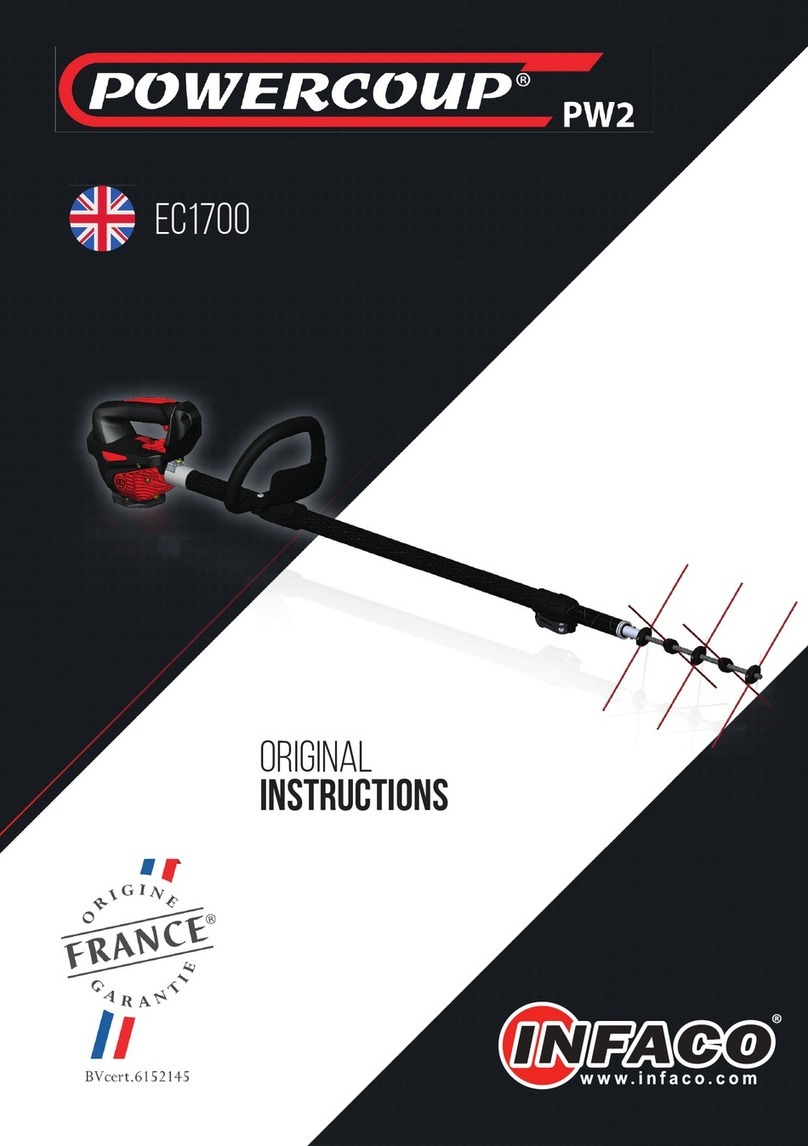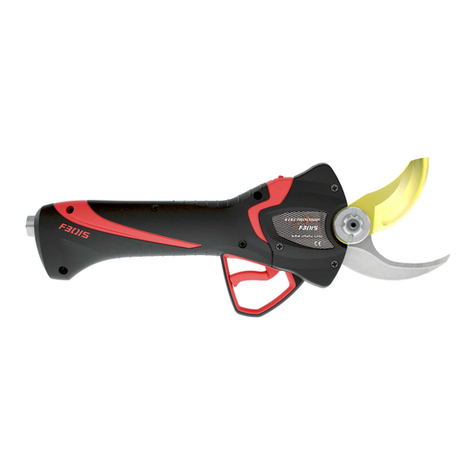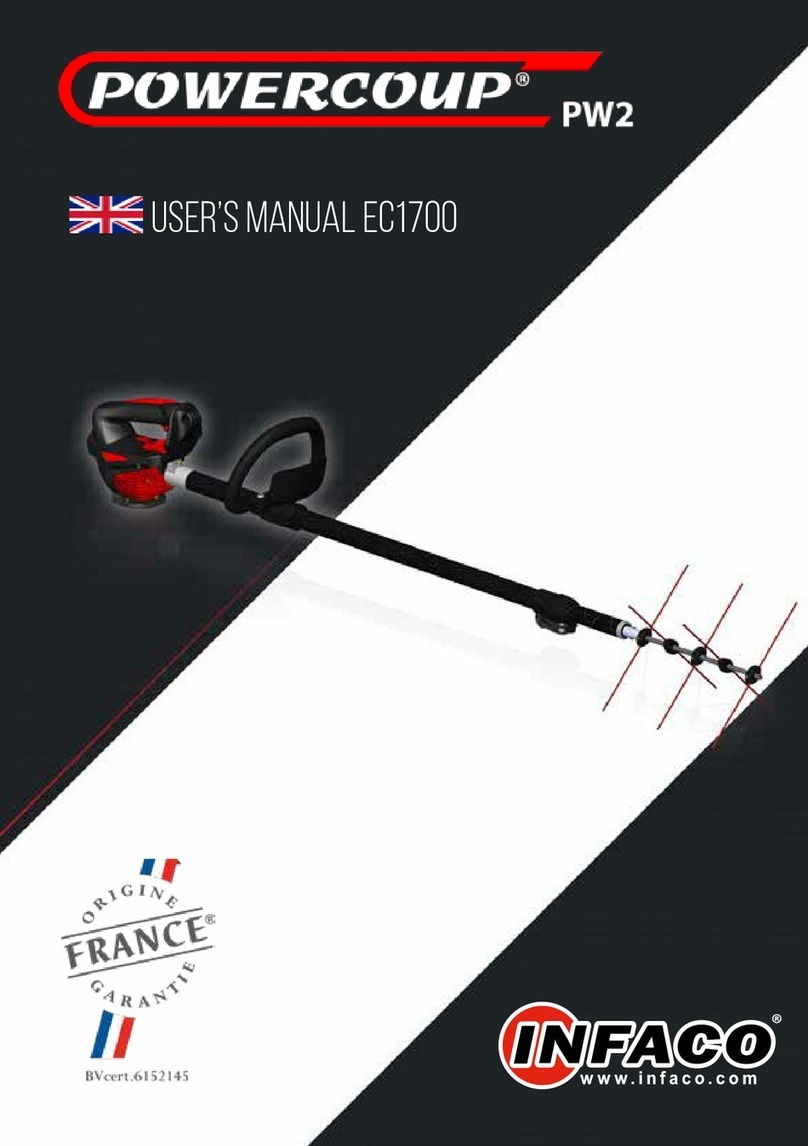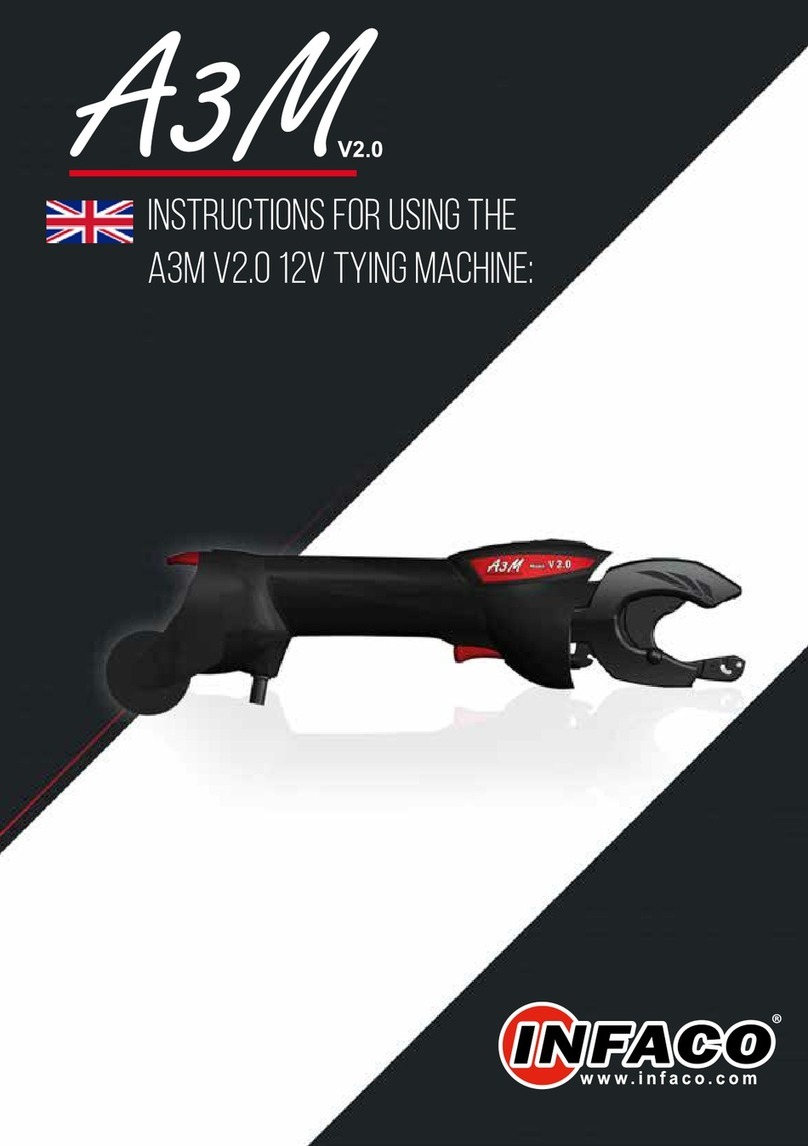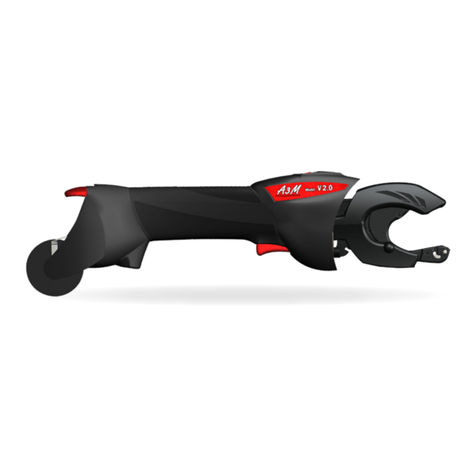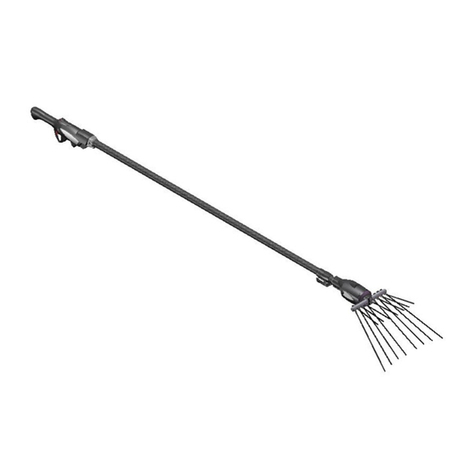
6
First use
We strongly recommend that you ask for assistance from your retailer, who is authorised to
give you all the advice you need to use the machine properly and achieve a good output.
Please read these instructions carefully before using the machine.
It will take a day’s use to acquire a sound knowledge of how to operate the machine.
Charger the battery for at least 3 hours before starting your first day’s work. (See chapter
“Recharging the battery”, P. 13).
Disconnect the machine from its battery for all operations apart from tying.
Always keep your hands well away from the tying head when the machine is in
operation.
We strongly recommend that, for safety and practical reasons, you use the case provided for
carrying the machine and the battery in the workplace.
Carrying the machine
> Attach the belt around your waist.
> Place the battery on your stomach side.
> Hang the tool cary bag on your belt to store your spools and tools.
In wet weather, the battery belt must be worn under waterproof clothing to keep
the battery unit dry.
User guide
